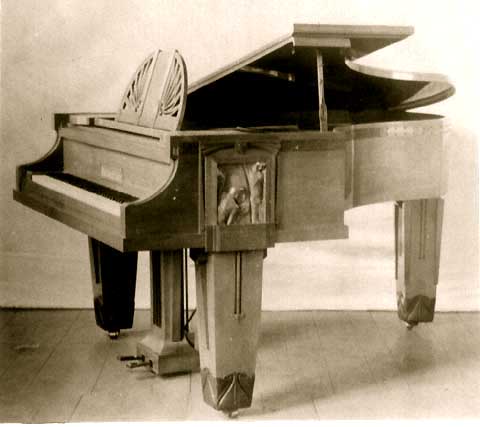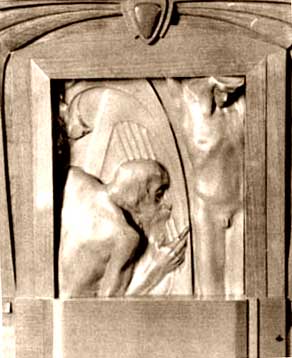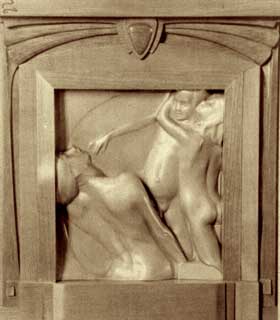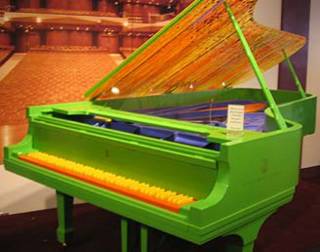Go  | New  | Find  | Notify  | Tools  | Reply  |  |
| "The Veiled Male" Gadfly  |
I don't "get" this one....
| |||
|
| Nobody's $hillbot Has Achieved Nirvana  |
I think Ron was talking about tuning a Seeburg while posting that other pretty picture. | |||
|
| Beatification Candidate |
That red thing is some kindof power strip thingee in Europe ... made to be visible and artistic....?
| |||
|
| Nobody's $hillbot Has Achieved Nirvana  |
It looks like a giant muting strip. | |||
|
| Beatification Candidate |
Is that a piano in the horse trailer?!? 
| |||
|
| "The Veiled Male" Gadfly  |
Think pink! 
| |||
|
| Nobody's $hillbot Has Achieved Nirvana  |
It looks like it's having an identity crisis, and might want to be a Hammond B3:  | |||
|
| Beatification Candidate |
| |||
|
Would-be Sage |
Blew the audience away...
| |||
|
Would-be Sage |
   A turn of the century beauty from Ibach. Note the inset pictures of the case carvings.
| |||
|
| "One half of me is a hopeless romantic, the other half is so damn realistic." Beatification Candidate |
 The Olympia, an art case Steinway designed by Dale Chihuly for the 2002 Olympics. It was also featured on The Genuine Article, TV show Tivo recorded for me that shows how Steinways are made.
| |||
|
| Serial origamist Has Achieved Nirvana |
I don't even want to guess... Maybe that would be a good candidate for a "caption this picture" thread...
| |||
|
| "One half of me is a hopeless romantic, the other half is so damn realistic." Beatification Candidate |
It would certainly be hard to miss!
| |||
|
| Beatification Candidate |
Sound mirrors for pianists that also conduct the orchestra: 
| |||
|
| Nobody's $hillbot Has Achieved Nirvana  |
Time for Markj to trade in his Estonia:  | |||
|
| Powered by Social Strata | Page 1 ... 76 77 78 79 80 81 82 ... 299 |
| Please Wait. Your request is being processed... |
|


